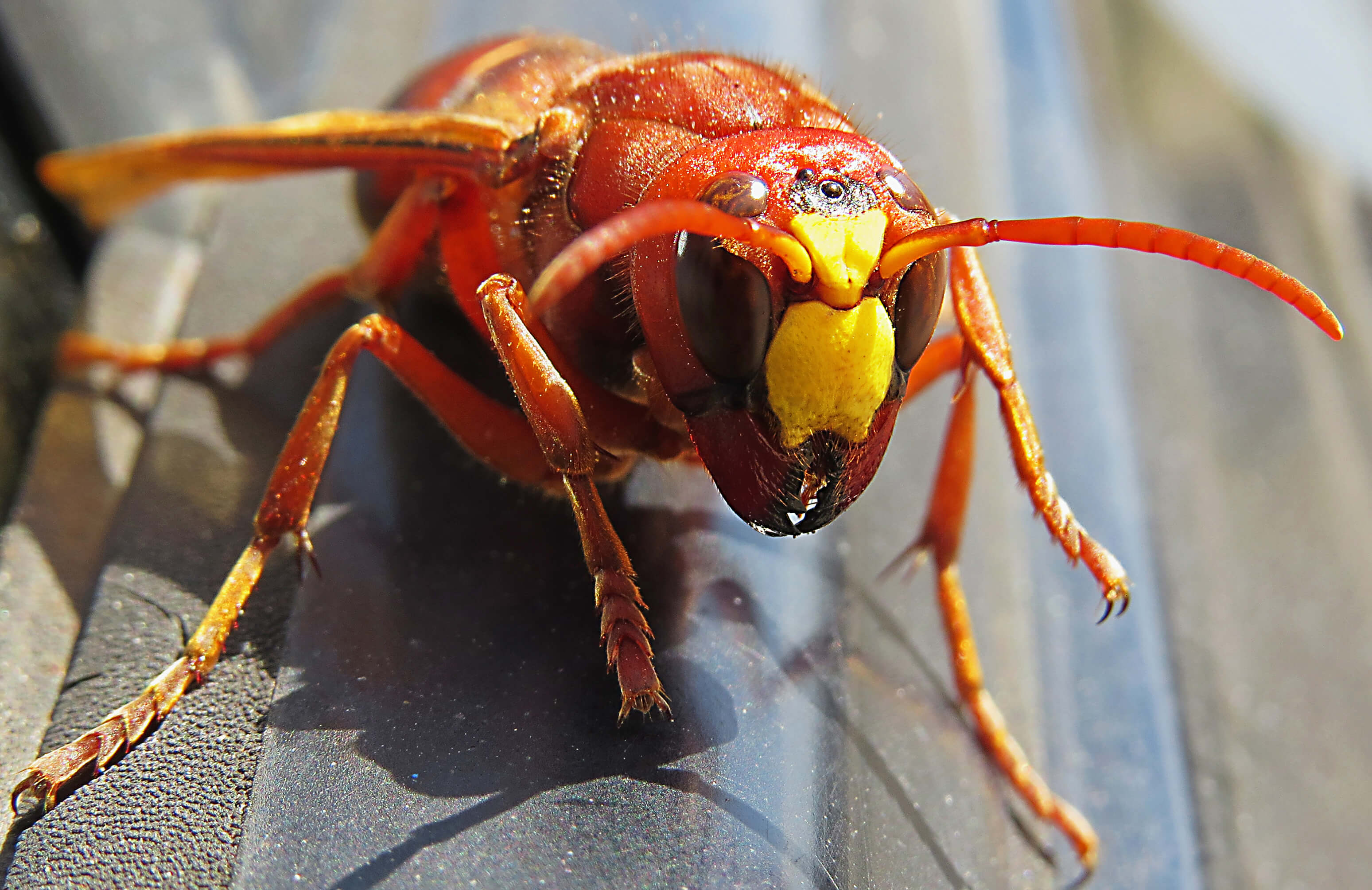Vespa mandarinia, the killer bee
The very name is enough to strike fear into the heart of any bee: “Murder Hornet”! Are we facing the entomological equivalent of an alien invasion? Or can we collectively shrug and go back to watching Tiger King? In the world of bees, the Vespa mandarinia (Asian giant hornet) needs no hype. It is huge in comparison to bees and it’s mandibles are razor sharp. It’s not just bees that are in the danger zone. One Canadian beekeeper recalls the sting of a “murder hornet” as “like having red-hot thumbtacks being driven into my flesh.” Ouch.
Bees in North America were already having a tough time before the unexpected appearance of the invasive giant hornets (who likely arrived via cargo ship from Japan, where “murder hornets” kill about 40–50 people a year.) The decline of wild bee populations in the United States and around the world is well documented. Threats include negative effects of climate change, intensive agriculture, pesticide use, habitat loss, reduced biodiversity, and pollution.
Everyone knows that bees make honey, and most know something about the role bees play in pollinating flowers. But the sheer scale of this natural phenomenon—and its vital connection to human flourishing—generally escapes our notice. It goes without saying that bees are, well, busy: they pollinate about one in six flowering plant species worldwide. In addition, bees contribute to the pollination of hundreds of agricultural plants worth billions of dollars to the U.S. economy alone. Each year billions of bees are trucked to the almond orchards of California’s Central Valley.
Then along came the dastardly “murder hornets,” which are threatening to stake a niche in the ecosystem of the Pacific Northwest. If they were to succeed, they could imperil bee populations in Washington State and throughout North America, and through them the food supply of human beings, among other animals. In response, scientists are in a race to track and trap the hornets, before any hope of eradicating them is lost.
Image credit: ©AyhanTuranMenekay/Shutterstock
Related Links:
- “Murder Hornets” in the U.S.: The Rush to Stop the Asian Giant Hornet
Explanation of the potential catastrophe looming in the world of bees; excellent visuals.
(Source: New York Times, May 2, 2020) - How Concerned Should the US Be about “Murder Hornets”?
Article describing the cause for alarm from the invading Asian giant hornet; includes video.
(Source: ABC News, May 18, 2020) - No, Americans Do Not Need to Panic about “Murder Hornets”
A level-headed take on the impact of so-called murder hornets; includes a diagram comparing sizes of bees, hornets, and wasps, and a video of battling hornet colonies.
(Source: Smithsonian Magazine, May 5, 2020) - Why Bees Are Important to Our Planet
A primer on the sublime significance of bees.
(Source: Green Planet; accessed May 26, 2020) - Native Bee Inventory and Monitoring Lab
Amazing collection of photographs of bees.
(Source: US Geological Survey; accessed May 26, 2020) - Bees Travel Cross Country for the California Almond Harvest
Fascinating radio report of bee “migration”—big bzzzness matches hives and orchards from Louisiana to California.
(Source: NPR, March 9, 2017) - It’s Not Just about the Honey
This World Bee Day podcast reports on declining global bee populations due to human activity.
(Source: Food and Agricultural Organization, May 20, 2019) - Declining Bee Populations Pose Threat to Global Food Security and Nutrition
A serious report on declining global bee populations from the UN agency that leads international efforts to end hunger.
(Source: Food and Agricultural Organization, May 20, 2019)




